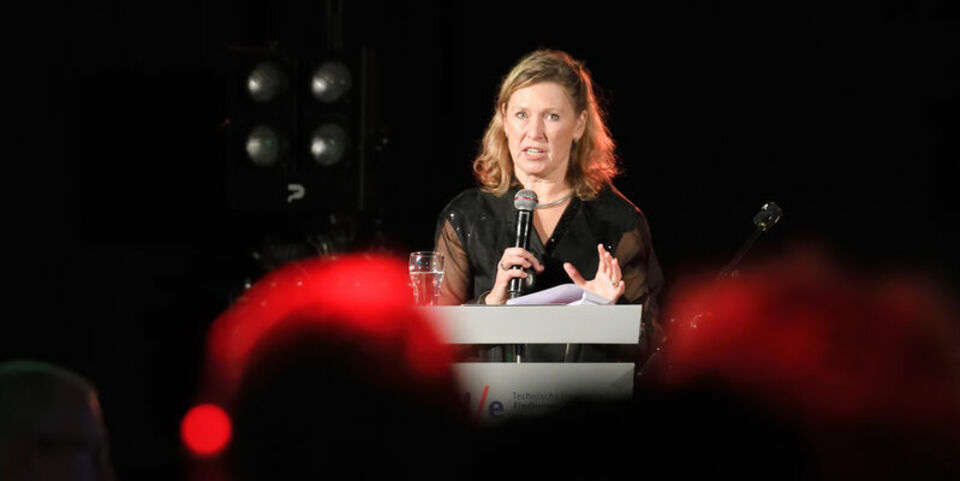Built Environment celebrates 50th year but faces anxious future
Student intake is on the rise again, the wind tunnel is ready for use, and there are some promising research initiatives. Nonetheless, it is certainly not all roses for her jubilant department, says Dean Elphi Nelissen. With a new funding model on the way she fears that cuts will have to go yet deeper.
Last week Thursday glasses were still being raised at the celebration of the department's fiftieth year and Dean Elphi Nelissen was receiving remarks in praise of the department's progress from former staff. According to Nelissen, there are indeed plenty of things to be proud of. She mentions the increase in secondary funding and contract research, the third form of funding, the substantial growth in student intake (with foreign countries accounting for one-third), and the forthcoming opening of Professor Bert Blocken's wind tunnel, cost 1.3 million euros.
Not to mention the research projects within the Smart Cities Program, such as Health in the Built Environment and the Brainport Smart District, and the research in the field of 3D printing. Promising developments, so that in terms of research, the future can be viewed positively, says the dean.
Rising deficits
But nor can she mask the fact that now is a painful time for her department. The response of the Departmental Council (FR) to the 2018 budget states clearly that they are concerned about the fact that as of 2017 the department ‘in good consultation will have to bid farewell to employees’. This will undoubtedly lead to higher costs for the item 'waiting allowances', but the budget shows no increase in this item compared to 2017, writes the FR. Further increases in deficits are feared.
Last year it was a reduction in the remuneration paid for credits that hit the department hard. Students and lecturers at Built Environment protested in June 2016 on the KOE field against this change, which would incur a further cutback of a half million euros for the department in 2017. Then consider that the decline in student intake in the preceding years, caused by the building sector crisis, is alone expected to reduce the budget in 2018 by 1.25 million euros.
New funding model
Nelissen is now concerned about the new funding model that will be developed in the coming year and in 2019 will replace the present Strategic Allocation Model (SAM). “Based on what I've heard about it to date, this model is not going to be favorable for a teaching department like Built Environment. The focus lies squarely on research and that could mean that we have to make even more cutbacks. When does it stop being acceptable and how can I keep my staff motivated under these circumstances?”
This prompts the question of whether after six-and-a-half years Nelissen still finds the position of dean an enjoyable one. “When I started, I said that I did not want to introduce any cutbacks, but as it turns out I've done nothing but that from day one. It's a great pity, because I came here to build things up. But the extent to which that is possible is limited.”


Discussion